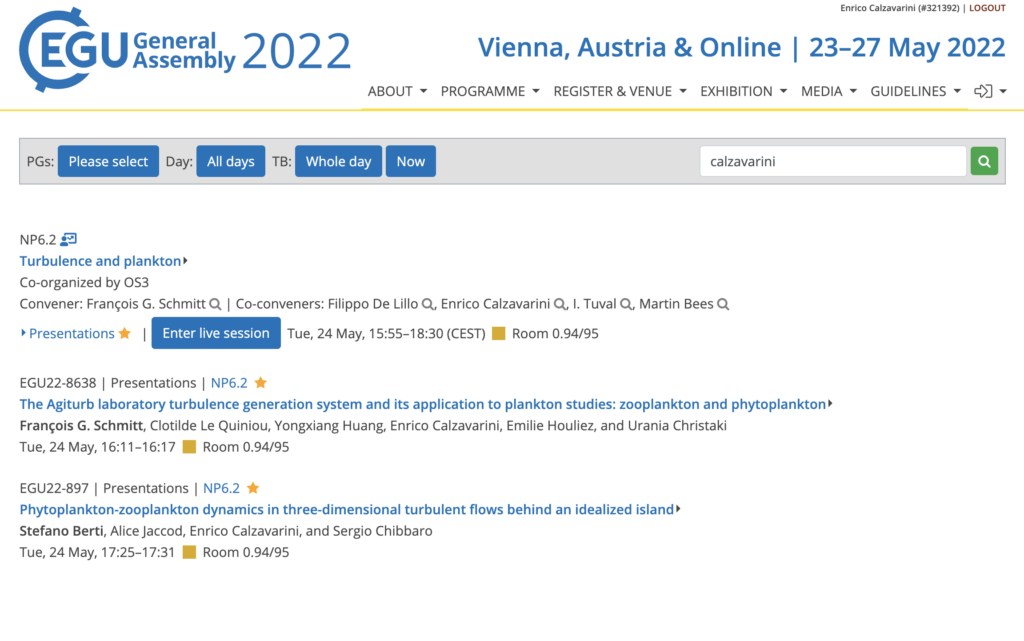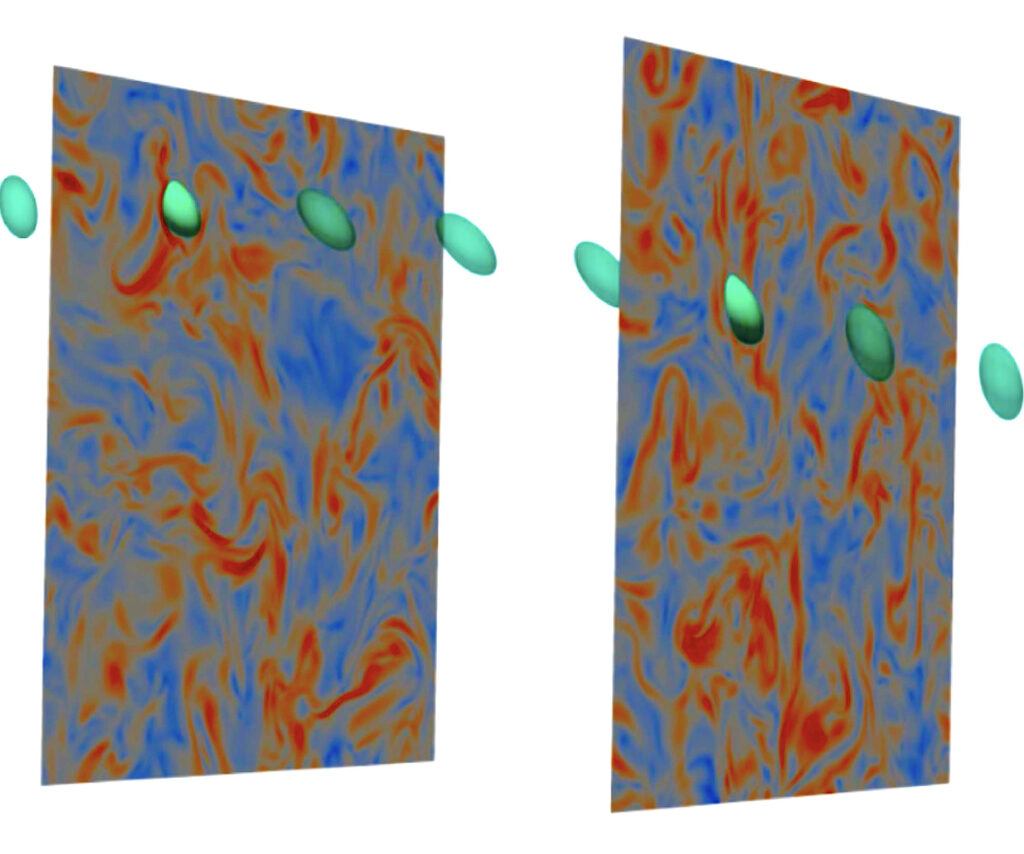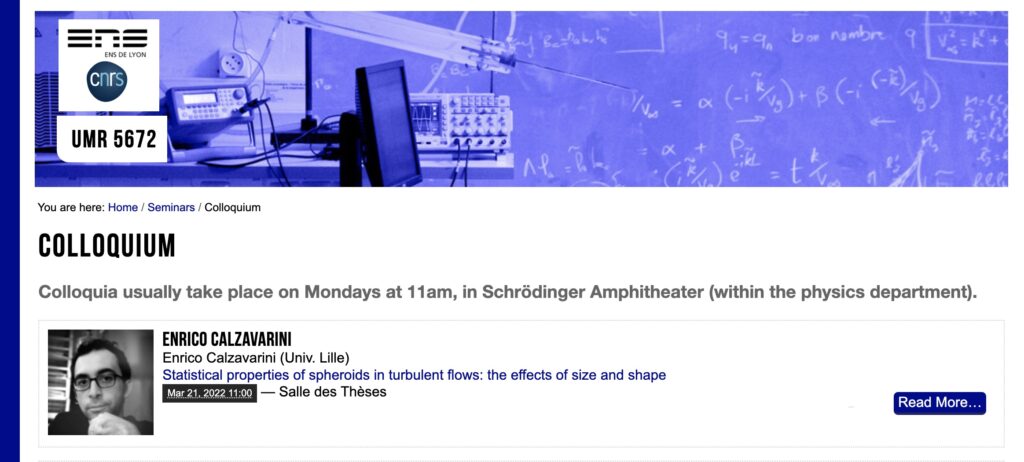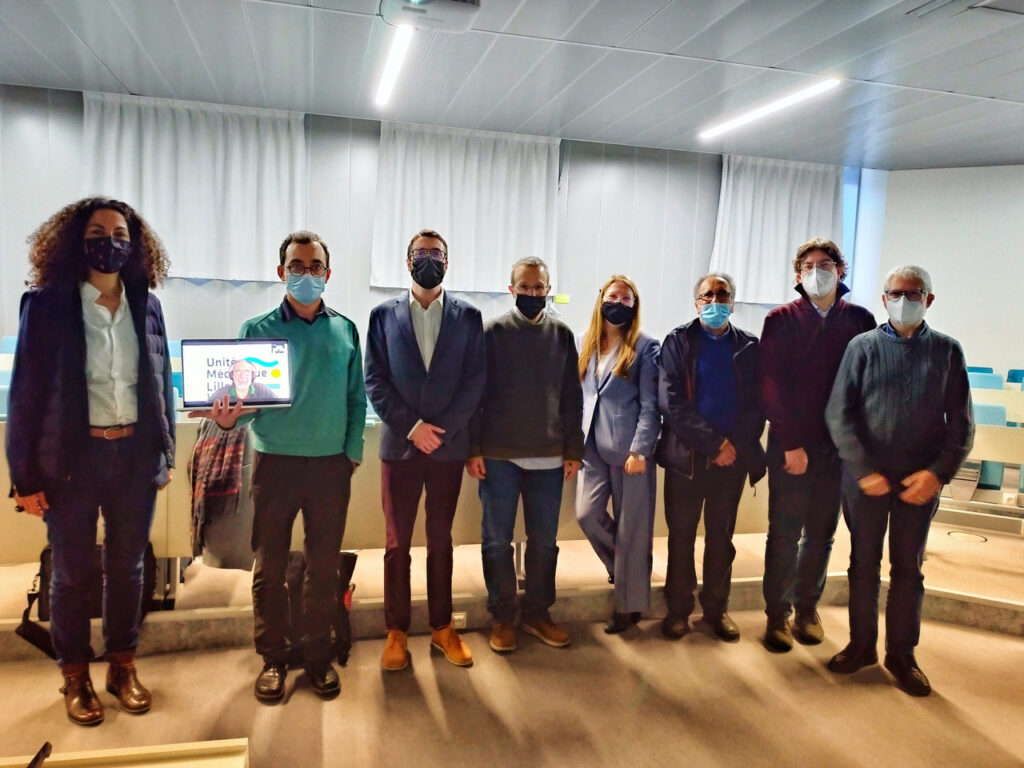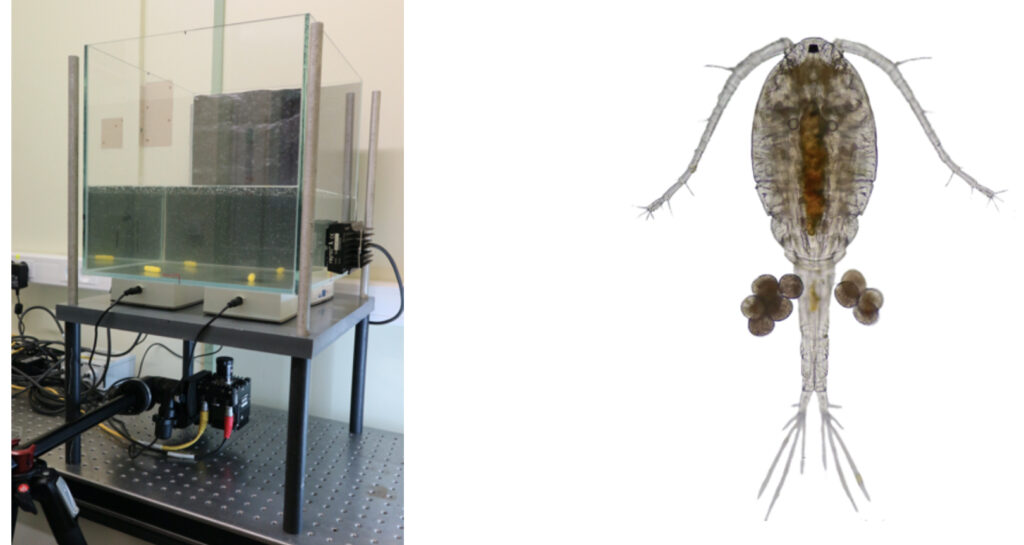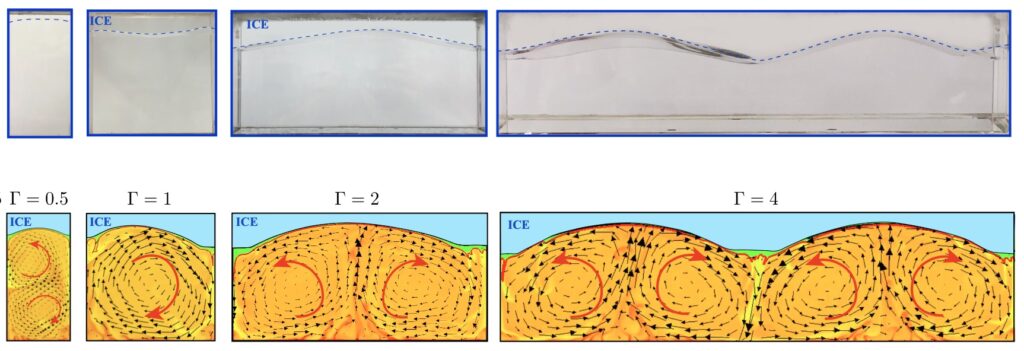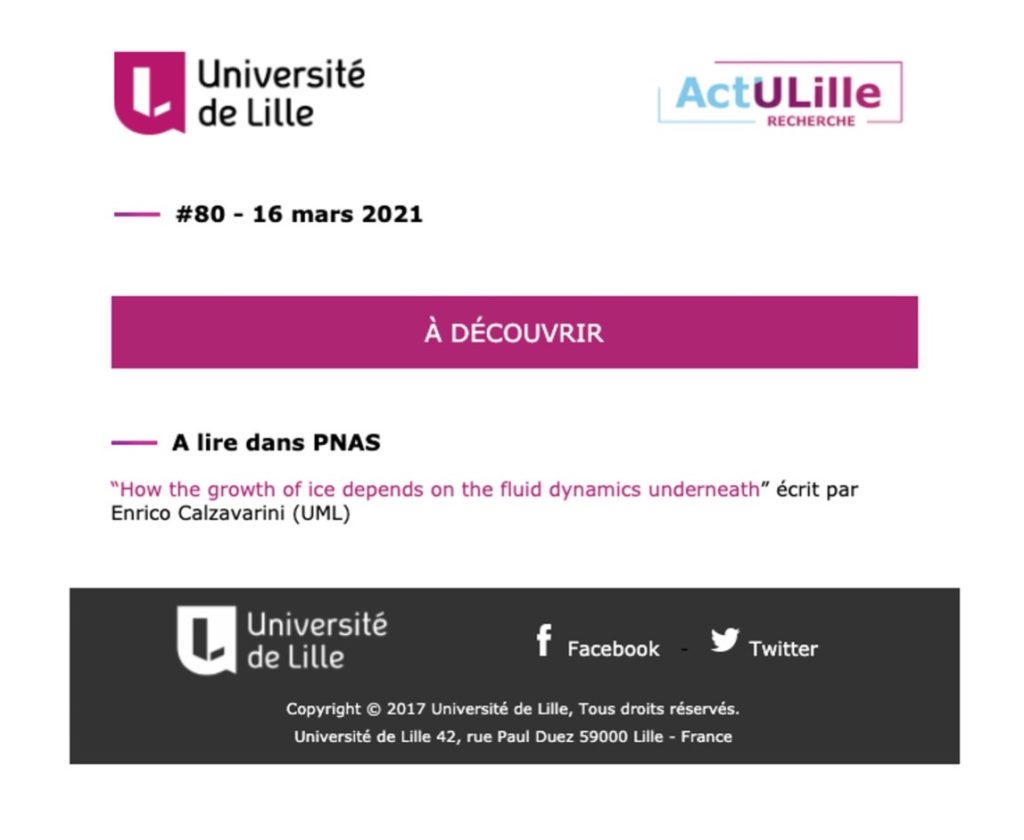Wandering large spheroids
Have a look to our new fully-resolved numerical study on JFM https://www.doi.org/10.1017/jfm.2022.197
A seminar in Lyon
Congratulations Vinicius!
Internship offer: Copepods in turbulence
Particles and copepods 3D trajectory tracking in a turbulent experimental flow by means of particle image velocimetry (duration: 6 months, from feb-march 2022, for M2 students in the french system or equivalent level for candidates from abroad).
More info here (french only): [6 months internship]. Applications to be sent by email to F.G.Schmitt and myself.
Ice cubes
How does the shape of ice depend on the lateral and vertical confinement in a convective cell? In which conditions can we get the maximal amount of ice? How many possible equilibrium states can we observe for this system? We have tried to rationalize these questions by means of simulations and experiments. Read about it in Equilibrium states of the ice-water front in a differentially heated rectangular cell, Ziqi Wang, Enrico Calzavarini and Chao Sun [ https://arxiv.org/abs/2108.13253 ] soon also on Europhys Lett.
Alice’s plankton
Read about our recent work on planktonic population dynamics around an obstacle in open flow. It’s Alice Jaccod PhD work “Predator-prey plankton dynamics in turbulent wakes behind islands”, in collaboration with S. Chibbaro and S. Berti . Now published in Phys. Rev. Fluids [https://doi.org/10.1103/PhysRevFluids.6.103802] and also available on Arxiv [ https://arxiv.org/abs/2105.05647 ].
The shape of ice
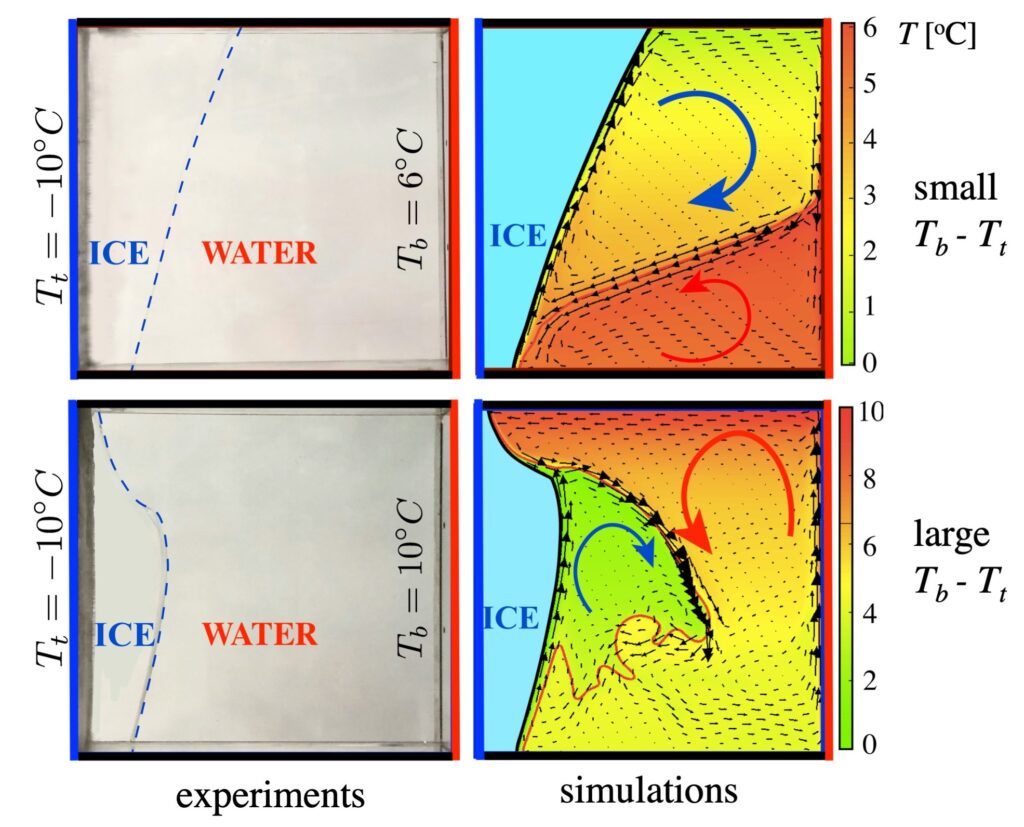
From our new preprint “Ice front shaping by upward convective current” with Ziqi Wang, Linfeng Jiang, Yihong Du, Chao Sun, Enrico Calzavarini [ https://arxiv.org/abs/2012.12078 ] and [ Phys. Rev. Fluids S6, L091501 (2021) ]
A slow but very elastic flow
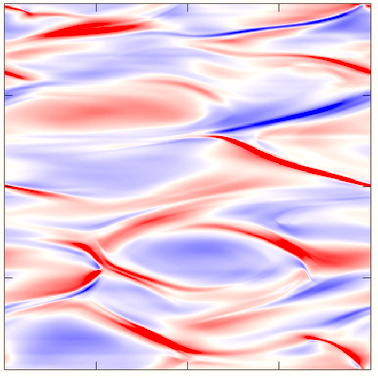
The last preprint on Himani’s PhD work is out: Statistical properties of two-dimensional elastic turbulence, Himani Garg, Enrico Calzavarini and Stefano Berti , http://arxiv.org/abs/2104.08951
Ice on the water
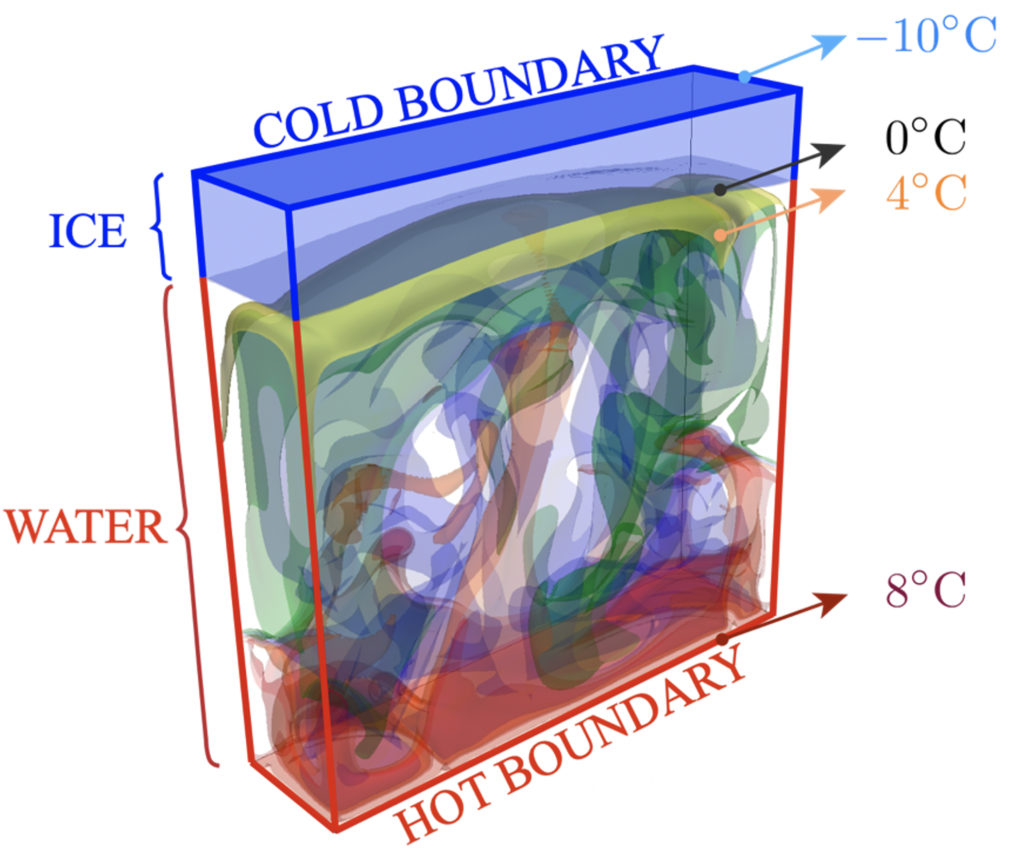
In the media: on Phys.org “Breaking the ice on melting and freezing” (nov. 2020)
